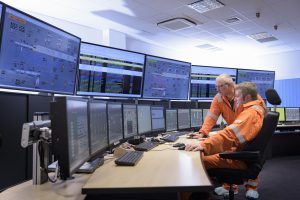OK, I admit I still have Brazil and World Cup Soccer on my mind. But even with energy and sustainability being quite the rage in the era of big energy data analytics, it’s still possible to muck things up. As with most complex enterprise initiatives, there are only a few ways to get it right and many ways to get it – well, not so right. Many corporate energy programs do well in picking “low hanging fruit,” such as energy efficient lighting, industrial process optimization, and behavioral change – but then hit a plateau, or even see energy performance degrade over time.
DILBERT © 2011 Scott Adams. Used By permission of UNIVERSAL UCLICK
Energy managers face daunting challenges, including the proverbial “big energy data flood,” where many struggle to formulate and compute simple, meaningful KPIs. And, while early gains are promising, they can be notoriously difficult to scale and replicate across multiple sites and geographies.
Enterprise-Level Success Means Avoiding Ten Common Minefields
What can we learn from successful enterprise-level energy and sustainability programs? Here are ten minefields to avoid while implementing a successful enterprise-level program.
1. Thinking tech-geek first.
Resist the engineer’s impulse to drown in technical implementation details.
Focus on the business case and financial model first.
2. Switching horses constantly just slows you down.
Pick one strong framework or methodology, such as ISO50001 or an integrated energy management lifecycle approach, and invest in it for the long term.
3. Trying to conquer the world, instead of picking your battles and angles of attack.
The streets of failure are littered with those who bite off more than they could chew. Prioritize your top three areas for best ROI. For example, consider energy cost analysis, power quality improvements, or fuel supply hedging.
4. Underestimating data integration and data quality challenges.
Integrating systems from multiple vendors is messy, but indispensable to achieve success. Data gaps or system communication failures can render the most advanced energy analytics useless. Validation and estimation tools can help in this area.
5. Neglecting power reliability and power quality.
A common mistake is treating the cost of power system outages differently from energy efficiency gains. A single unplanned outage with failure of emergency systems can destroy years of savings achieved through energy efficiency projects.
6. Lack of standardization across multiple sites and departments.
Standardizing how you capture energy data, measure and benchmark performance across comparable sites enables you to drive alignment towards your energy management and sustainability strategy.
7. Treating sustainability metrics as an after-thought to energy.
The days of sustainability being just for passionate eco-enthusiasts are long gone. Demonstrable improvements in sustainability strengthen your brand and increase market share, and tighter supply chains demand attention on these areas.
8. Lack of a strong foundation with monitoring infrastructure.
Modernize and expand operational site-level power monitoring, building management systems and metering infrastructure. Systematically building data hierarchies of measurement (i.e. site-department-cost center-building-device) is tedious work requiring attention to detail, but is critical to get right early in the process.
9. Sizing early projects incorrectly.
A single site will not capture most common challenges, while having too many sites will bog the project down. Doing an exhaustive pilot with two to three relevant sites, then replicating it for economies of scale will allow you to demonstrate quick success.
10. Embarking on the journey without a strong mission declaration and people commitment.
A public affirmation backed up by strong staffing commitment and incentives can work wonders. Strong program management for behavioral change and continued adoption is critical, because sustaining gains and weaving them into the company DNA is really the tough part.
Recognize the symptoms – energy and sustainability management is less a destination and more a journey of continuous improvement – as Germany proved decisively. Sorry, Brazil.
Next Steps
No matter where you are in your enterprise energy management journey, it is important for you to have a strategic plan and continuously monitor and verify performance versus goals. Your enterprise energy plan is driven by a constant stream of energy-related data that aids you in developing a strategy. The strategy drives certain actions that you should continuously monitor and verify to ensure you are achieving your goals.
If you are stuck anywhere in this journey and need help, you should contact your energy management partner to help you.



